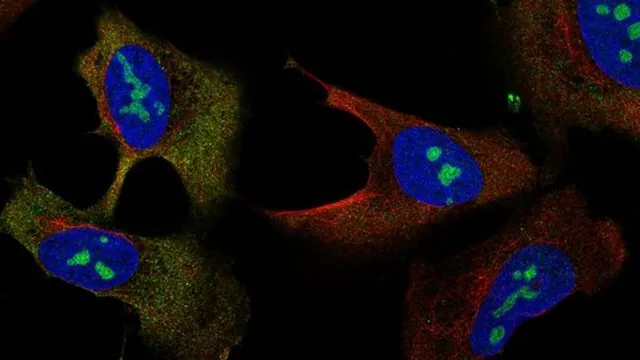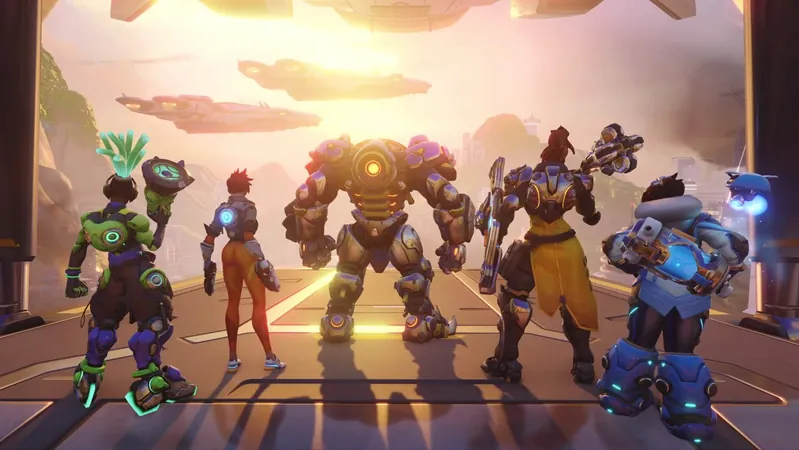
Revolutionizing Cancer Research: A Groundbreaking Map of Subcellular Architecture Revealed!
2025-04-10
Author: Mei
Unlocking the Mysteries of Human Cells
For over 400 years, scientists have embarked on an ambitious quest to map the complexities of the human cell. Yet many cell components remain a tantalizing mystery. Leah Schaffer, Ph.D., a postdoctoral scholar at UC San Diego School of Medicine, states, “We know all the proteins present in our cells, but their orchestration and functionality across cell types is still largely uncharted territory.”
A Collaborative Breakthrough in Cancer Cell Mapping
In a groundbreaking collaboration with experts from Stanford University, Harvard Medical School, and the University of British Columbia, Schaffer and her team have unveiled an interactive map of U2OS cells—crucial players in pediatric bone tumors. This innovative map intricately combines high-resolution imaging and biophysical protein interactions, shedding light on subcellular architecture and assemblies. The implications are profound, promising insights into how mutated proteins contribute to various diseases, including childhood cancers.
A New Era in Cell Understanding
Trey Ideker, Ph.D., a UC San Diego professor and co-author, emphasizes, “Despite what textbooks suggest, we lack a proper catalog and assembly manual for any human cell type.” Using an advanced technique called affinity purification, the researchers isolated individual proteins to capture their interconnections. By analyzing over 20,000 fluorescent dye-marked images, they mapped 275 unique protein assemblies within U2OS cells.
The Multifunctional Mystery of Proteins
This research challenges the outdated notion that one gene produces one protein with a singular function. Co-senior author Emma Lundberg, Ph.D. from Stanford, notes that many proteins exhibit multifunctional capabilities. Their pioneering study unveiled an astonishing 975 previously unknown protein functions, including the enigmatic C18orf21, linked to RNA processing.
Harnessing AI for Scientific Advancement
In a remarkable integration of artificial intelligence, the team leveraged GPT-4, an advanced AI model, to accelerate their research. By querying this AI tool, they quickly gathered insights into protein functions and their interactions, aiding in the visualization of protein assemblies in the map. Clara Hu, a doctoral candidate in Ideker's lab, highlights that this technological approach significantly reduced research time.
A Navigational Tool for Disease Research
The U2OS cell map allows researchers to pinpoint mutations linked to cancer development. By identifying 21 frequently mutated assemblies within the map, the study connected 102 mutated proteins to the pathogenesis of cancer, revolutionizing how scientists approach cancer research. Ideker argues that shifting the focus from individual mutations to the broader cellular machinery is essential for understanding cancer dynamics.
Exploring the Map: A New Frontier
Browsing the U2OS cell map is akin to exploring a detailed geographical interface, enabling scientists to zoom in on specific protein communities and their interactions. As Schaffer explains, the increasing resolution reveals intricate details, making it a tool for deeper exploration.
Implications for Future Research
The U2OS cell atlas not only stands to illuminate childhood cancers but also paves the way for mapping other cell types, enhancing the use of AI in understanding poorly characterized proteins, and unraveling the mechanisms of various diseases. This revolutionary study, set to be published in Nature on April 9, 2025, marks a significant leap in the ongoing quest to decode the intricate world of cellular biology.




 Brasil (PT)
Brasil (PT)
 Canada (EN)
Canada (EN)
 Chile (ES)
Chile (ES)
 Česko (CS)
Česko (CS)
 대한민국 (KO)
대한민국 (KO)
 España (ES)
España (ES)
 France (FR)
France (FR)
 Hong Kong (EN)
Hong Kong (EN)
 Italia (IT)
Italia (IT)
 日本 (JA)
日本 (JA)
 Magyarország (HU)
Magyarország (HU)
 Norge (NO)
Norge (NO)
 Polska (PL)
Polska (PL)
 Schweiz (DE)
Schweiz (DE)
 Singapore (EN)
Singapore (EN)
 Sverige (SV)
Sverige (SV)
 Suomi (FI)
Suomi (FI)
 Türkiye (TR)
Türkiye (TR)
 الإمارات العربية المتحدة (AR)
الإمارات العربية المتحدة (AR)